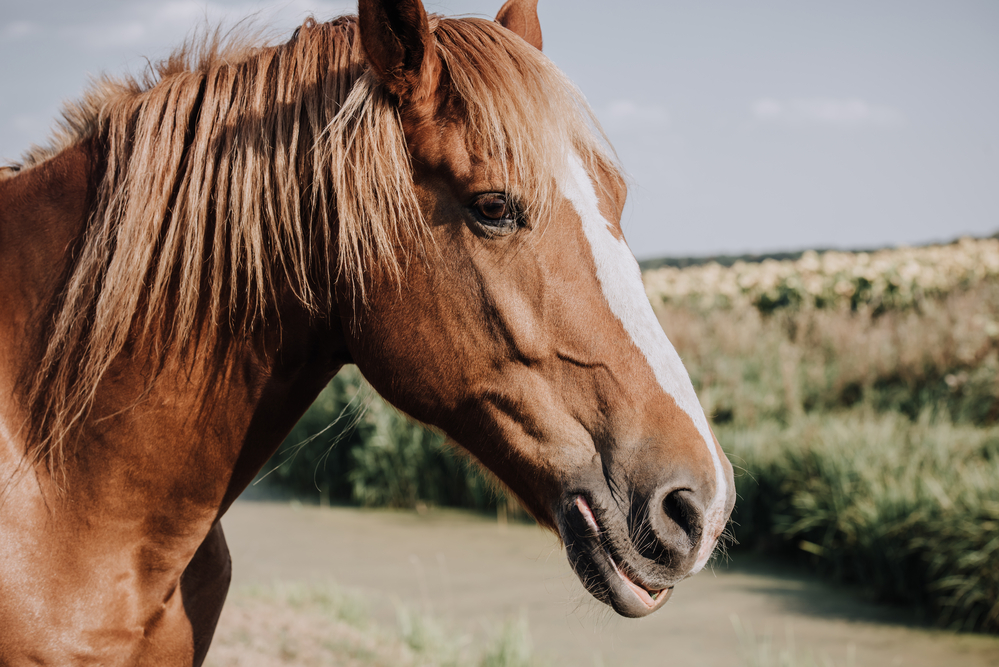The history of Quarter Horses is deeply intertwined with the fabric of American culture.
Since their origins in the 17th century, these versatile, powerful horses have left an indelible mark on various aspects of American life.
Originating in the British colonies, Quarter Horses were the result of a crossbreeding between imported English Thoroughbreds and local Native American breeds.
The outcome was a horse with incredible speed over short distances, making them the ideal choice for both work and racing in the early days of the American frontier.
As settlers moved westward, Quarter Horses played a pivotal role in the development of the United States.
Thanks to their combination of speed, agility, and strength, these horses quickly became an essential asset in various industries, such as cattle ranching, agriculture, and even transportation.
In addition to practical applications, their competitive spirit made them the perfect candidates for captivating and lucrative horse racing events.
This led to an explosion of popularity and the development of a rich and storied racing heritage that continues to influence American culture today.
Key Takeaways
- Quarter Horses emerged from crossbreeding between English Thoroughbreds and local Native American breeds
- These versatile horses played a significant role in the development of America, from ranching to transportation
- Their competitive nature and racing popularity continue to shape American culture today
Origins of Quarter Horses
As a horse enthusiast, I’ve always been fascinated by the history of horses, especially the American Quarter Horse.
Its history can be traced back to Colonial America, where English horses were imported to Virginia and bred mainly for plantation work.
These horses were bred to have a variety of colors, such as sorrel, bay, and brown, to add some variety to the horse world.
In the early days, some of the foundation sires of the Quarter Horse breed were of Arabian and North African Barb descent, such as the famous Godolphin Arabian.
These horses were often crossed with Spanish stock and Mustangs, which were brought over by the Spanish and later acquired by the Chickasaw Indians.
I find it fascinating that the Chickasaw Indians traded with the Colonial settlers, exchanging their Florida and Plains Indian horses for the English horses.
This mixing of breeds led to the creation of horses with unique traits like speed over short distances – a defining characteristic of Quarter Horses today.
The Quarter Horse breed was further influenced by famous sire, Sir Archy, and horses like Steel Dust and King, which added muscle and speed to the breed.
With this combination of traits, it didn’t take long for the breed to gain popularity, particularly in the Southern states.
In summary, the American Quarter Horse has a rich history filled with fascinating stories of its origins.
From the early days of Colonial America to the influence of different cultural groups, the breed has developed into a versatile and beloved staple of American culture.
I’m proud to be a part of this ongoing historical legacy and to share my knowledge with fellow horse lovers.
Development of the Breed in America
When I think about the impact of Quarter Horses on American culture, I can’t help but go back to the roots of this incredible breed’s development in the United States.
The American Quarter Horse, known for its exceptional strength, versatility, and performance, has a rich and storied past that truly captures the essence of America’s love for horses.
In the early days of the United States, horse racing enthusiasts began crossbreeding Thoroughbreds with local horse breeds—such as Arab and Barb horses—to create a horse that could excel at short-distance racing.
This resulted in the creation of the Quarter Running Horse, named for the quarter-mile distances at which they became famous for their unmatched speed.
The Quarter Horse bloodlines can be traced back to legendary horses like Janus, Printer, and Peter McCue, among others.
These early bloodlines have produced famous stallions such as Wimpy, Leo, and Poco Bueno, who have all had a significant impact on the horse breed over time.
As breeders continued developing the Quarter Horse, they aimed for a combination of speed, strength, conformation, and versatility, making these horses perfect for various disciplines such as cutting, reining, show jumping, and driving.
The American Quarter Horse Association (AQHA) was established in 1940 with a registry for the breed.
As the oldest breed registry in the United States, the AQHA has seen the breed evolve, change, and adapt to the modern world.
Today, there are over 3 million registered Quarter Horses globally, displaying various colors, including black, and different levels of Thoroughbred blood.
Throughout the years, the AQHA has made significant efforts to ensure the breed’s progress and recognition.
Notable events such as the All American Futurity, a prominent race for young Quarter Horses, have contributed to raising awareness and appreciation for the breed.
Additionally, individuals like William Anson and Dan Casement have played critical roles in the development and spread of the Quarter Horse breed.
As I reflect on the historical impact of the Quarter Horses on American culture, I can’t help but feel proud of this versatile breed that has done so much for equine enthusiasts and the history of our nation.
Impact on American Culture
As I look back on the history of the United States, I can’t help but acknowledge the incredible impact that Quarter Horses had on our culture.
These hardy, versatile animals became the heart and soul of the early West, contributing greatly to the growth and development of our nation.
In the early days of the American Revolution, Quarter Horses served as indispensable working horses, carrying pioneers and settlers across the rugged terrain of the Midwest and Southwest.
They were known for their ability to cover short distances quickly, making them essential for transporting goods and people to the burgeoning towns in these areas.
As the cattle industry grew, especially in the Southwest, ranchers and cowboys alike came to rely on Quarter Horses for their unparalleled skills in herding cattle.
Ranches like the famous King Ranch in Texas reveled in the breed’s agility, speed, and cow sense. They really were partners in the arduous task of running cattle ranches.
Events like rodeos took inspiration from these working partnerships and became commemorative showcases of the incredible bond between the cowboys and their horses.
As Quarter Horses became synonymous with the Western way of life, they spread beyond the Southwest and the Midwest and into other regions of the United States.
Enrico County, a Turk settlement, founded a community determined to keep the history and techniques of working with Quarter Horses alive.
Today, you’ll find Quarter Horses all across our great nation, still used in various sporting and ranching activities.
These wonderfully resilient animals played an integral role in shaping the American frontier, and their echoes remain today in our vibrant Western and pioneering cultural heritage.
When we think about the influence of Quarter Horses on our nation, we remember fondly the strength and spirit that these beautiful creatures brought to America and the hardworking hands that raised them.
Quarter Horses and the World of Sports
When I think of Quarter Horses and their impact on the sports world, I can’t help but be amazed at the versatility of these incredible animals.
From racing to performance events, Quarter Horses have proven themselves time and time again as true champions.
In the world of horse racing, the Quarter Horse is the star of the show. These fast, powerful animals got their name from their ability to dominate the quarter-mile races.
Some of the most prestigious events in racing, like the All-American Futurity, feature Quarter Horses at their finest.
Many great champions have emerged, earning the title of World Champion Quarter Running Horse and solidifying their place in history.
But racing isn’t the only sport where Quarter Horses shine. They also excel in a range of disciplines that showcase their athleticism and versatility.
Reining is one such sport where these horses leave spectators in awe. Their agility, precise movement, and responsiveness make them ideal competitors in this demanding sport.
Cutting is another sport that puts the Quarter Horse’s natural abilities on display. They possess an innate “cow sense” that helps them excel in this thrilling competition.
Quarter Horses have the ability to anticipate the movements of a cow and position themselves accordingly, making them indispensable partners to cowboys and cowgirls.
Show jumping is yet another arena where Quarter Horses demonstrate their prowess. Their powerful hindquarters and agile nature make them excellent jumpers, capable of conquering challenging courses with grace and elegance.
Whether it’s blazing down the racetrack or gracefully navigating a show jumping course, Quarter Horses have made their mark in the world of sports.
Their rich history and continued success demonstrate the unparalleled versatility and athleticism of these incredible animals.
Preservation and Future of the Quarter Horse
I strongly believe in the importance of preserving the American Quarter Horse and its cultural impact on American society.
The American Quarter Horse Association (AQHA) plays a vital role in this preservation, as they are responsible for maintaining the breed registry.
This registry ensures that only horses with the right lineage and characteristics are recognized as true American Quarter Horses.
As a member of the AQHA, my mission is to uphold the breed’s high standards and maintain its rich history.
The AQHA registration is not only crucial for the breed’s preservation; it also provides a platform for horse enthusiasts to connect and share their passion for these incredible animals.
In addition, the AQHA hosts various events, such as the World Champion Quarter Running Horse races, which showcase the breed’s athleticism and exceptional abilities.
The future of the American Quarter Horse depends on our collective efforts to maintain their genetic integrity and promote responsible breeding practices.
By supporting events that highlight the breed’s unique qualities and advancing public awareness, we can ensure that future generations continue to enjoy the many benefits these horses have to offer.
Looking ahead, I am optimistic that the Quarter Horse will continue to play a significant role in American culture.
The breed’s versatility, speed, and strength make them the perfect companion for diverse activities, from ranch work and trail riding to professional racing and rodeo events.
By valuing and promoting the American Quarter Horse, we can preserve its legacy and support a bright future for the breed.
Frequently Asked Questions
How have Quarter Horses influenced American sports?
As an equestrian enthusiast, I’ve observed how Quarter Horses have played an integral role in American sports.
These versatile horses excel in rodeo events like barrel racing, calf roping, and team penning.
Their incredible speed, agility, and strength make them a popular choice for the sport of cutting, where horses and riders work together to separate a cow from a herd.
In all these sporting activities, Quarter Horses have contributed immensely to the growth and recognition of equestrian sports in America.
What role did Quarter Horses play in American ranching?
Throughout my experience, I’ve learned that Quarter Horses have been closely associated with ranching and cowboy culture in America.
Their intelligence and athleticism made them perfect for cattle work, enabling ranchers to manage their herds more efficiently.
With a deep-rooted connection to the iconic American cowboy, Quarter Horses also provided a crucial means of transportation for cowboys, making their jobs much more accessible and feasible.
How did Quarter Horses shape the evolution of horse racing?
In my studies on horse racing, Quarter Horses have played a significant role in shaping the sport’s evolution.
Originating in the 17th century from a mix of English Thoroughbreds and Native American horses, they became admired for their exceptional sprinting ability in short distances.
The “Quarter” in their name signifies the 1/4 mile races they dominated. This racing legacy has continued throughout the years and led to the establishment of the American Quarter Horse Association (AQHA) and official Quarter Horse races.
What contributions have famous Quarter Horses made in American history?
Some famous Quarter Horses have left lasting legacies in American history.
For instance, “Joe Hancock,” an influential stallion, sired numerous talented offspring and is now considered one of the foundational sires of the modern Quarter Horse breed.
Another superb example is “Doc Bar,” whose excellence in both cutting and reining contributed to shaping the future of these disciplines.
As a fan of such horses, I’m personally impressed with their history and the impact they’ve had in creating the versatile breed we know today.
How have Quarter Horses impacted the development of other horse breeds?
In my exploration of equestrian history, I’ve found that Quarter Horses, as one of the oldest American breeds, have made a significant impact on other horse breeds.
They’ve contributed to the development of the Appaloosa and American Paint Horse, either through direct crossbreeding or by influencing the desirable features of these breeds.
Furthermore, their characteristics, such as strength, intelligence, and adaptability, have served as a model for selective breeding in other breeds.
What social and economic impacts have Quarter Horses had on American society?
As an American, I’ve seen the profound social and economic impact of Quarter Horses.
They’ve helped forge the identity of the American West, giving rise to popular cultural symbols like cowboys and rodeos.
Economically, these versatile animals have stimulated various industries, including horse racing and equestrian sports, breeding, and ranching.
In turn, these industries have generated jobs and revenue, supporting local economies across the nation.
Overall, Quarter Horses have played and continue to play a crucial part in the development of America’s cultural and economic landscape.









